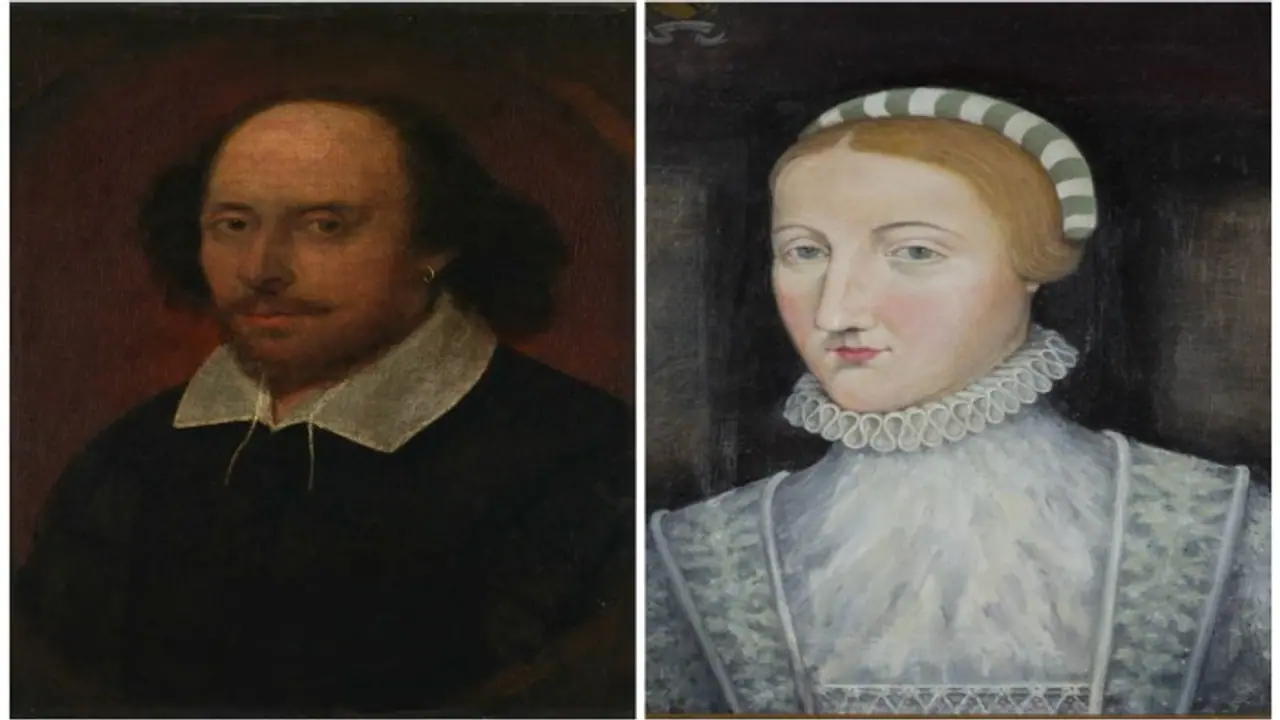A 17th-century letter fragment indicates that Anne Hathaway may have lived with William Shakespeare in London, challenging the belief that she remained in Stratford while he pursued his theatrical career in the capital.
For centuries, the prevailing narrative has been that William Shakespeare left his wife, Anne Hathaway, in Stratford-upon-Avon while he built his theatrical career in London. However, a recently analyzed 17th-century letter fragment suggests that Anne may have lived with Shakespeare in London, offering a fresh perspective on their relationship.

The letter, addressed to "Good Mrs Shakspaire," was discovered in 1978 within the binding of a 1608 book at Hereford Cathedral's library. The book, Johannes Piscator’s analyses of biblical texts, was printed by Richard Field, a native of Stratford and Shakespeare’s first printer. Despite its discovery decades ago, the letter remained largely overlooked due to the difficulty in identifying the names and places mentioned.
Professor Matthew Steggle of the University of Bristol has now examined the fragment and believes it provides evidence that the Shakespeares resided together on Trinity Lane—now Little Trinity Lane—in London.
The letter discusses a financial matter involving a Mr. Butts, his widow, and their son, John Butts. It suggests that Shakespeare was entrusted with money for John until he came of age and that Anne had independent access to these funds.
"The letter writer thinks that 'Mrs Shakspaire' has independent access to money," Steggle noted. "They hope that Mrs Shakspaire might 'paye your husbands debte'." This implies that Anne was not only present in London but also actively involved in financial affairs, challenging the notion that she remained in Stratford throughout Shakespeare's career.
Further research by Steggle uncovered records of a John Butts, an apprentice who became fatherless and was under his mother's care. A 1607 document from Bridewell, an institution responsible for disciplining apprentices, mentions a John Butts being "sett to worke" due to "his disobedience to his Mother." Later records place him in Norton Folgate, an area associated with Shakespeare's theatrical activities and his business partners, the Burbages.
If the handwriting on the back of the letter is indeed Anne's, it would represent the closest existing representation of her voice. This discovery challenges long-held assumptions about the Shakespeares' marriage and living arrangements.
The research is published in the journal Shakespeare by the British Shakespeare Association on April 23, coinciding with the anniversary of Shakespeare's birth. Steggle concludes, "For Shakespeare biographers who favour the narrative of the 'disastrous marriage'—in fact, for all Shakespeare biographers—the Hereford document should be a horrible ... ."

